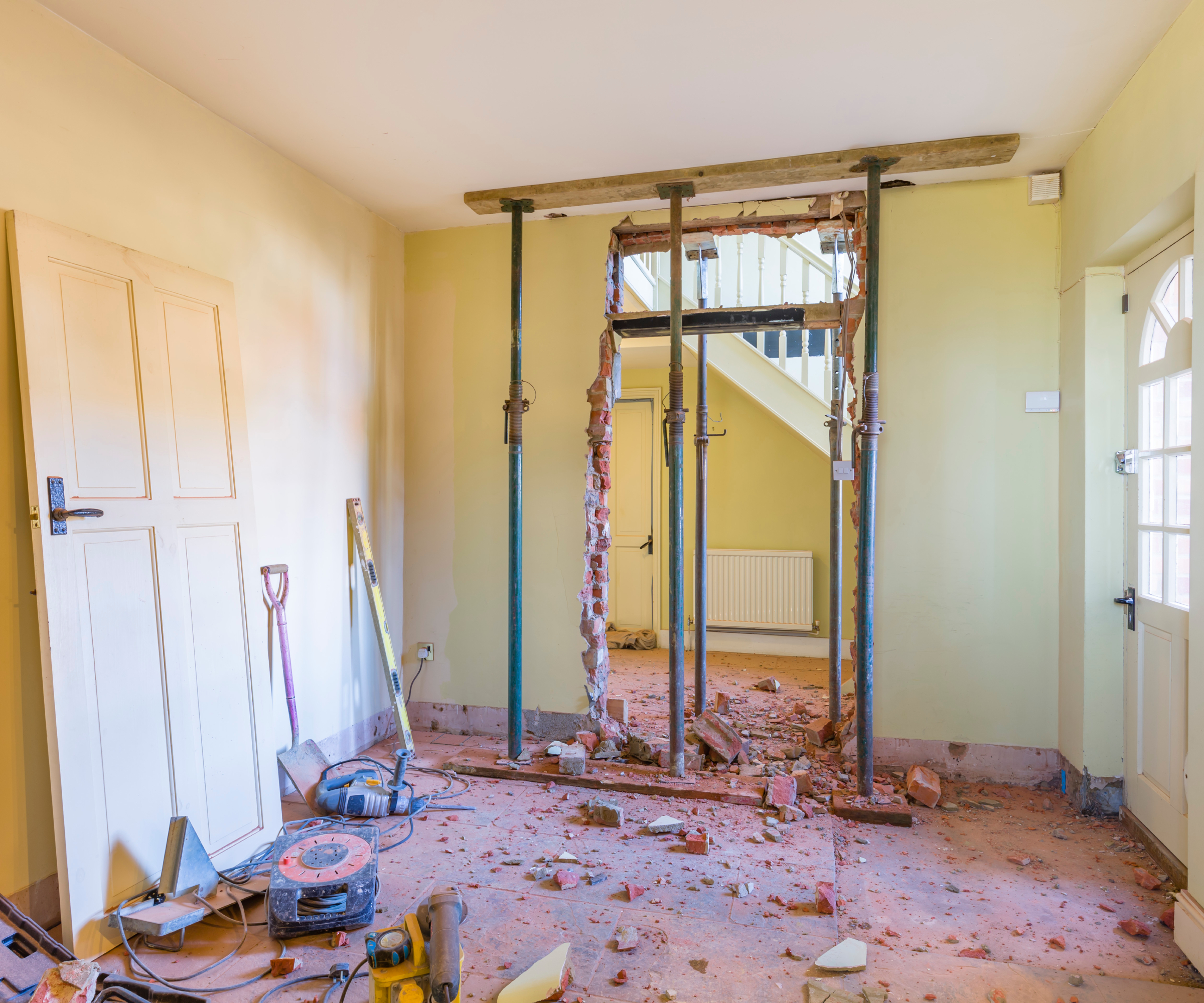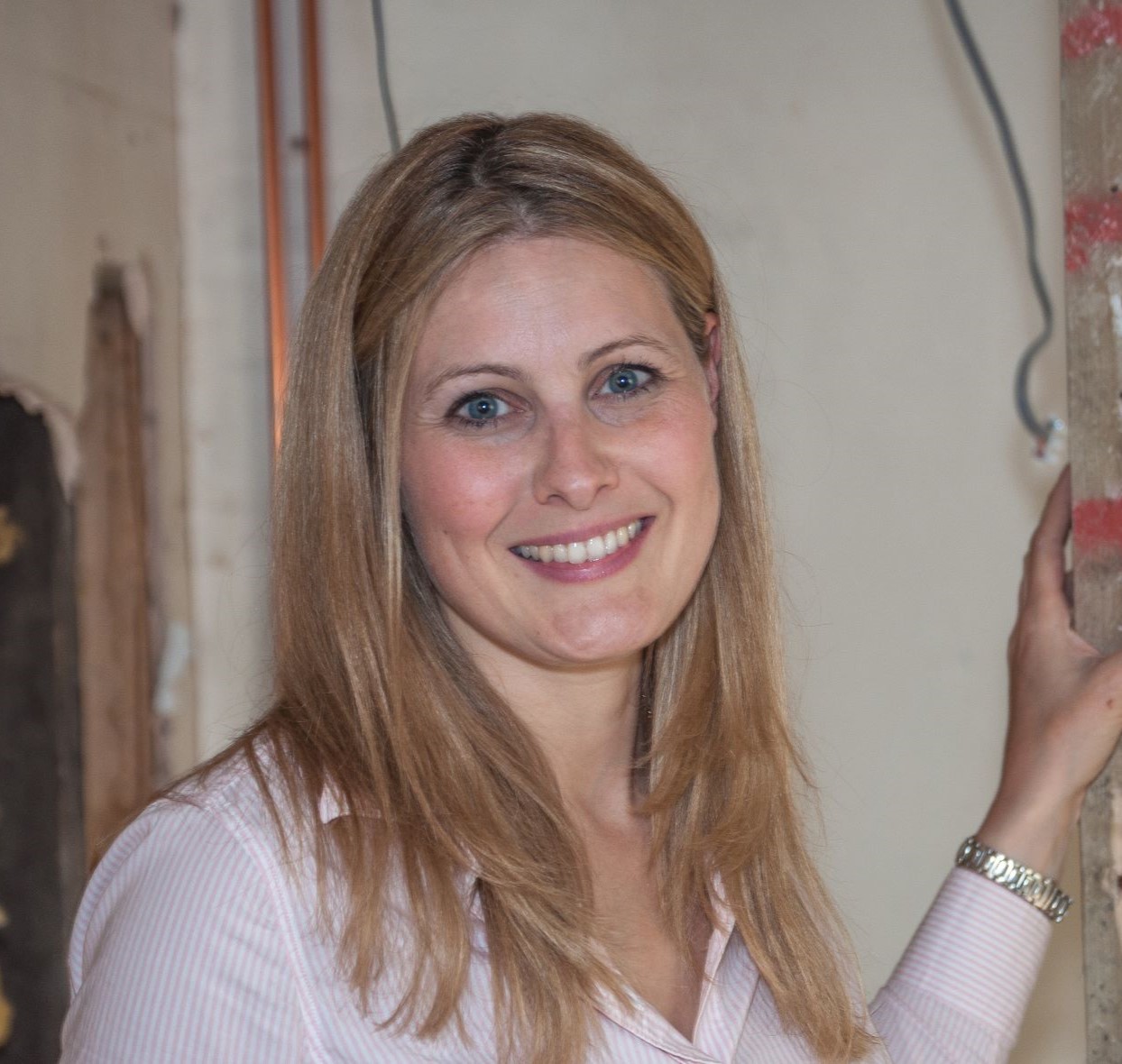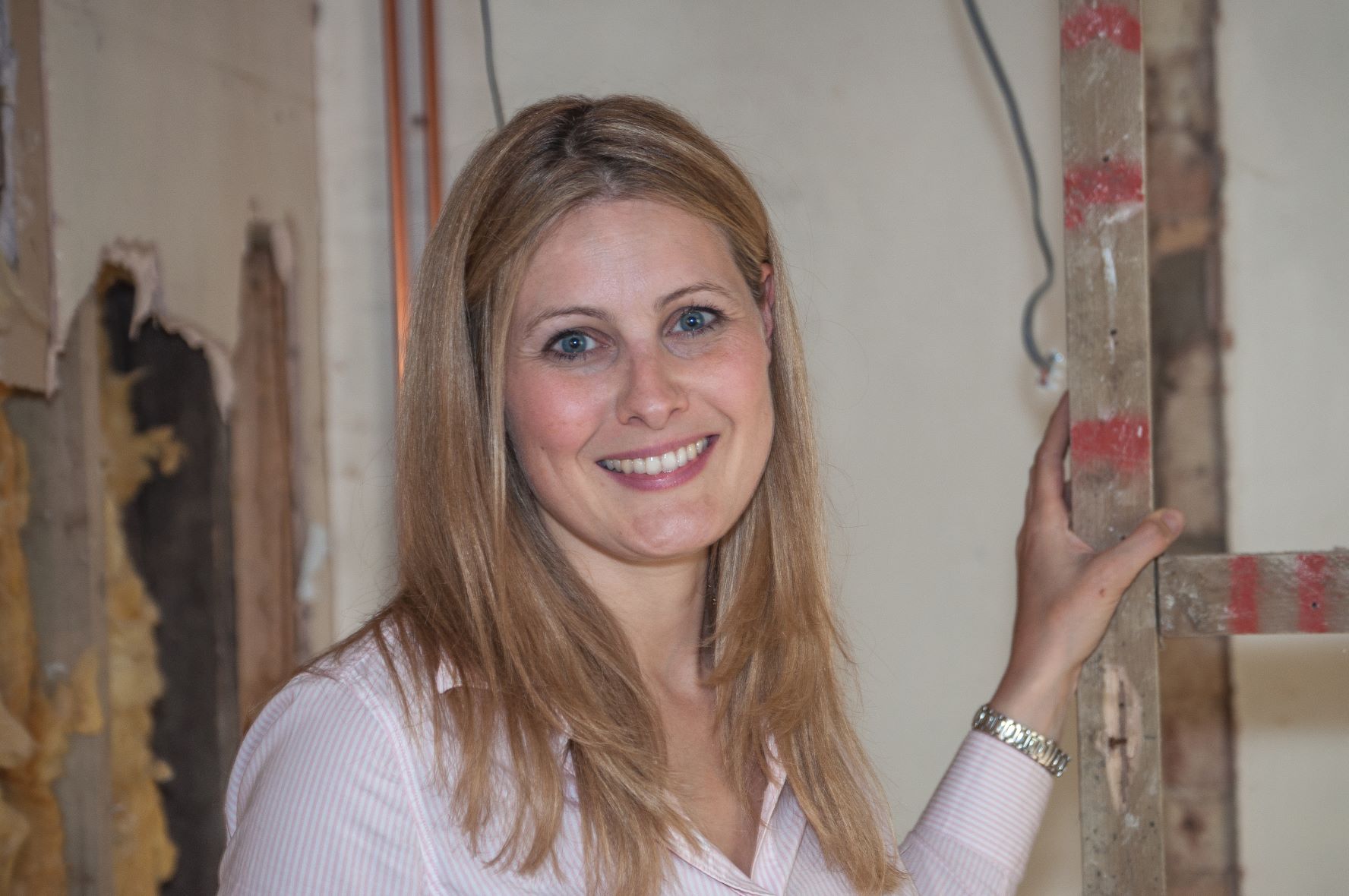Do you know how to tell if a wall is load-bearing? Avoid demolition disasters by making sure you do
The most important thing you need to establish before removing a wall is if it's load-bearing. Make sure follow this expert advice before you start any work

If your home renovation plans include open plan living, you're probably looking to remove some internal walls. But, while it's fair to assume external walls are load-bearing, it's not always as simple on the inside.
Before you start wielding any type of demolition tool, it's essential to make sure you understand how to tell if a wall is load-bearing or not. Get it wrong and you could find yourself with a safety risk, breaking the rules and incurring unnecessary costs to rectify your mistake.
Why? Because if a wall does turn out to be load bearing, you'll not only need a structural engineer to undertake calculations for an alternative support but building control sign-off too.
What is a load-bearing wall?
"Internal walls – usually defined as room-dividing walls, as opposed to the insides of the external walls – come in two distinct flavours: load-bearing and non load-bearing," explains Mark Brinkley, author of the popular Housebuilder’s Bible and an experienced self-builder.
"A load-bearing wall acts as a support for a roof, a floor, a beam or another wall above it. It needs to be a little stronger than a non load-bearing wall and, crucially, it needs extra support under it, usually an additional foundation trench.
"Load-bearing walls can have a major effect on renovations, especially when you want to take down an existing wall. In these cases, it is vital to know whether or not the internal wall is load bearing because if it is, you will need to provide an alternative means of support," explains Mark.
"If in any doubt at all, then do get the building professionally surveyed so that you know what you are dealing with. If you are rearranging loads, then the building inspector will almost certainly want you to employ a structural engineer to design and approve the plan," he advises.
Bring your dream home to life with expert advice, how to guides and design inspiration. Sign up for our newsletter and get two free tickets to a Homebuilding & Renovating Show near you.
"The consequences of taking down a load-bearing wall without knowing what you are doing don’t bear thinking about," warns Mark. "In contrast, non load-bearing walls act as little more than room dividers and can be easily altered or even removed."


Mark is the author of Housebuilder’s Bible and an experienced builder. The Housebuilder’s Bible is the go-to hardback for self builders; originally published in 1994, it is updated every two years with up-to-date build costs and information on planning and building regulations, and is currently in its 14th reiteration. He has written for publications such as Homebuilding & Renovating for over three decades. An experienced self-builder, his latest self-build, a contemporary eco home built to Passivhaus principles, was created on a tight urban brownfield plot.
How to tell if a wall is load bearing
The most common mistake made by homeowners asking how can I tell if a wall is loading, is in assuming that internal stud work walls can't be load-bearing. However, when it comes to stud vs solid, it's vital to understand that any wall can be load bearing – even if it is made up of studwork and feels flimsy.
Paul Hymers, author and building control officer, also says a common mistake is assuming a wall is only load bearing if it is holding up a floor. This isn't the case, as roof loads can transfer down, as can the loads of other internal walls, beams and joists.
"The ceiling joists in traditional roofs are commonly supported on a central spinal wall, with the rafters also propped up from it by diagonal struts pinning the purlins that carry them. Of course, with the advent of trussed rafter roofs the need for spine walls to support the roof has gone but floor structures haven’t changed," explains Paul.
"Inner walls might also act as load-bearing elements by virtue of simply buttressing the external walls, giving them support against wind-loading. Because all external walls have a maximum span in the same way that beams do, they are subject to horizontal load from wind as well as vertical load.
"The distance an external wall can run unsupported depends on its thickness and exposure to the elements," he adds, "but you can think of the wall panel as a wind break that needs holding up, with buttressing support, at the returning ends and possibly along the way.
"A masonry chimney or pier of the right size can also provide this additional support but more often, internal walls that are perpendicular to it are brought to bear in this role."
As a guide, there are some very good indications that a wall is probably load bearing and therefore should not be touched without professional input. The structural engineering team at Allan Corfield Structures, explain:
- Exterior walls: Any exterior walls to your building are likely to make up your property's structure and therefore are highly likely to be load bearing.
- Central walls: Walls that run from front to rear, or side to side, are usually load bearing. A consistent wall line between floors can be an indicator of this.
- Wall with a wall immediately above it: Generally you'd stack your load-bearing walls so anything on a first floor that goes right down to the ground floor is likely to be load bearing. It could be supporting the roof too so you need to be more wary.
- Wall with perpendicular floor joists on top: The best way to tell here is if you open up the ceiling and have a proper look. Where this isn't possible, there are other clues. The detail at the top of the wall is different for a load-bearing wall and a non load-bearing wall. Your engineer or contractor should be able to spot these indicators. Even so, you'd always still need to confirm this by opening it up before removal.
- If you have any intermediate beams nearby : If you can't open up the ceiling, we would often make the assumption that the joists are spanning in the shorter direction, which would be typical. But that's not always the case, sometimes you will have an intermediate beam. Some older houses will have a beam in the centre of the living room and the joists can be spanning to that and your wall could be supporting the beams. So you do need to be careful.
- Racking panels on stud work: If a studwork wall is lined with OSB the likeliness of it being structurally important is increased as OSB is often used to strengthen a structure.
- Tenement homes: Extra care should be taken with tenements and other historic buildings as they aren't built to modern standards so their load-bearing walls aren't always tied to other walls. Once you start altering them they can be quite sensitive.

Paul has been a building control officer since 1984 and written eight books on home improvements and building homes.
Additional ways to check if a wall is load-bearing
Engineers usually have access to historic, typical arrangements for houses and any archive drawings that are available. The archive drawings are the best way to confirm where walls are load bearing or not. Failing that, there's typical house layouts, if you are looking at tenements or looking at relatively new houses with replicated layouts. There's a general rule that most follow.
The one thing you shouldn't rely on or use as evidence? Believing what the previous homeowner tells you, as Homebuilding & Renovating's website editor, Amy Willis discovered.
"When I began renovating a house, the previous owners had assured me a dividing wall in the sitting room was "definitely not load bearing" as they'd had it installed themselves underneath one of the historic timber beams of the house that appeared to be holding the load instead.
"Dismantling it to open up the room was meant to be a simple job, but when I pulled off the gypsum plasterboard and removed the insulation, it started to look like the studwork was doing more work than expected," says Amy.
"The old timber beam above appeared well supported by timber uprights on one side of the wall, but closer inspection from the other side revealed hidden gaps between the uprights and the beam. Historic woodworm had disintegrated parts of the beam too, and careless power tool usage in the past had left deep cut marks in it as well.
"It illustrates an important lesson; before you start work removing a wall always take off all the plasterboard and insulation first so you can see what is going on underneath. And if in any doubt, always call in a structural engineer. That's what I did and I'm glad I did."

Amy is website editor for Homebuilding & Renovating, having joined the publication in 2022. Before this, she spent more than a decade working at media outlets including ITV, The Daily Telegraph, ESPN, MailOnline, Metro, Yahoo and AOL. She has been renovating and extending her historic home in the Suffolk countryside for over three years, overhauling the kitchen, living room, upstairs bedrooms and bathroom. She is currently installing a new driveway with a garage conversion and utility room extension planned too.
Can you remove a load-bearing wall?
Yes, when knocking down internal walls, load-bearing walls can be removed but you will need to pay a structural engineer to draw up calculations for a suitable beam that can be installed to hold the load once you have removed the wall. The structural engineer is likely to include a thorough risk assessment of the work too.
"Your structural engineer will calculate the weight imposed from each element of construction, total them up, factorise them and determine the ultimate design load on the beam. Armed with this figure and the maximum bending moment, the beam itself can be specified," explains Paul Hymers.
Removing load-bearing walls also requires building regulations approval. To get this, you need to contact your local building control officer at your local council, or a private approved inspector, and they will give you a quote for the visit to sign it off. Alternatively your builder might arrange this for you.
Do all this before you start the work as they may have additional requirements. You will also need to submit your structural engineer's drawings to your building control officer. Once the work is complete, they will check the beam that has been installed is the correct one as per the drawings.
Obviously, you will need to make sure your building control officer comes out before you plasterboard over or cover the beam so they can see what you've done.

Signs a wall might not be load bearing
A good way to tell if a wall isn't load bearing, is if the top timber of the studwork does not touch the timber joist of the floor above or any beam. Basically, if the wall is not making contact with anything structural.
For instance, if the studwork butts up with a plasterboard ceiling rather than the joists. This is likely to be a room divider that was added later rather than being load bearing.
You will need to remove all plasterboard from the studwork to check this is definitely the case and there are no hidden load-bearing structures inside the wall. If in any doubt, it's always best to call in a structural engineer because the worst-case scenario in getting it wrong is damaging the structural integrity of your home, which can make it unsafe.
Looking at the type of studwork used is not a reliable indicator as to whether the wall is load bearing or not. This is because most walls use C16 and C24 timbers and both can be used for load-bearing walls.
A stud wall can easily have been installed without the intention of it being load bearing, but end up actually holding a load. Hence it's always important to assess each wall individually.

Check out our guide for further reading on how to assess your home for renovation if you are still unsure whether you should remove a load-bearing wall or not. Or, if you are knocking down one wall but need to create a divider in another part of the room, find out how to build a partition wall the right way.

Amy spent over a decade in London editing and writing for The Daily Telegraph, MailOnline, and Metro.co.uk before moving to East Anglia where she began renovating a period property in rural Suffolk. During this time she also did some TV work at ITV Anglia and CBS as well as freelancing for Yahoo, AOL, ESPN and The Mirror. When the pandemic hit she switched to full-time building work on her renovation and spent nearly two years focusing solely on that. She's taken a hands-on DIY approach to the project, knocking down walls, restoring oak beams and laying slabs with the help of family members to save costs. She has largely focused on using natural materials, such as limestone, oak and sisal carpet, to put character back into the property that was largely removed during the eighties. The project has extended into the garden too, with the cottage's exterior completely re-landscaped with a digger and a new driveway added. She has dealt with de-listing a property as well as handling land disputes and conveyancing administration.
